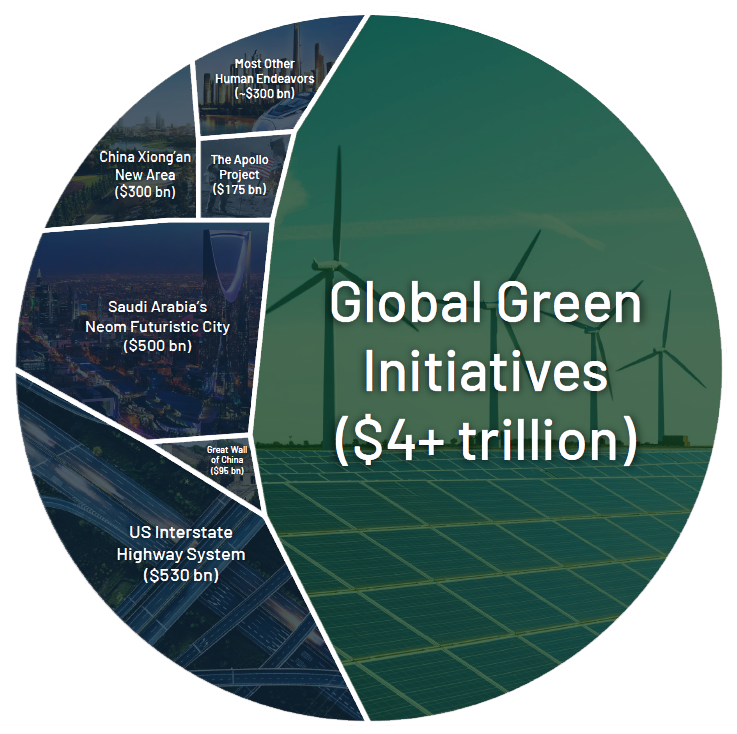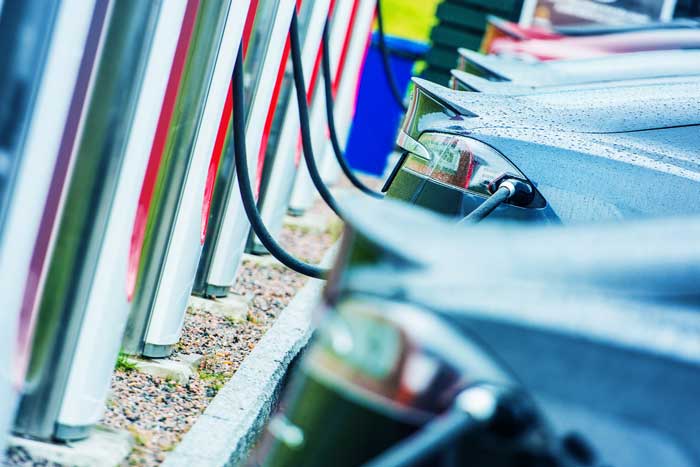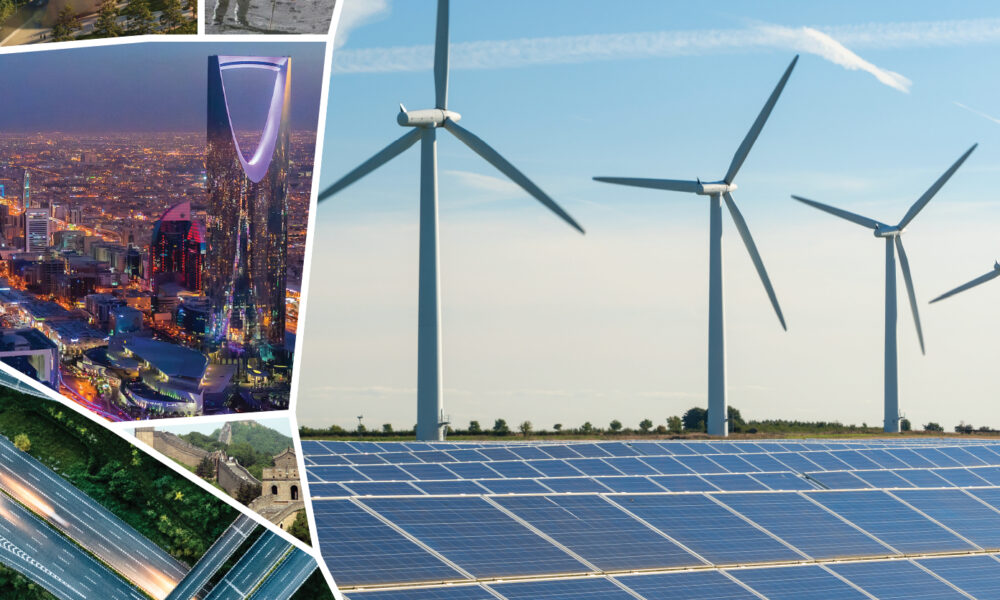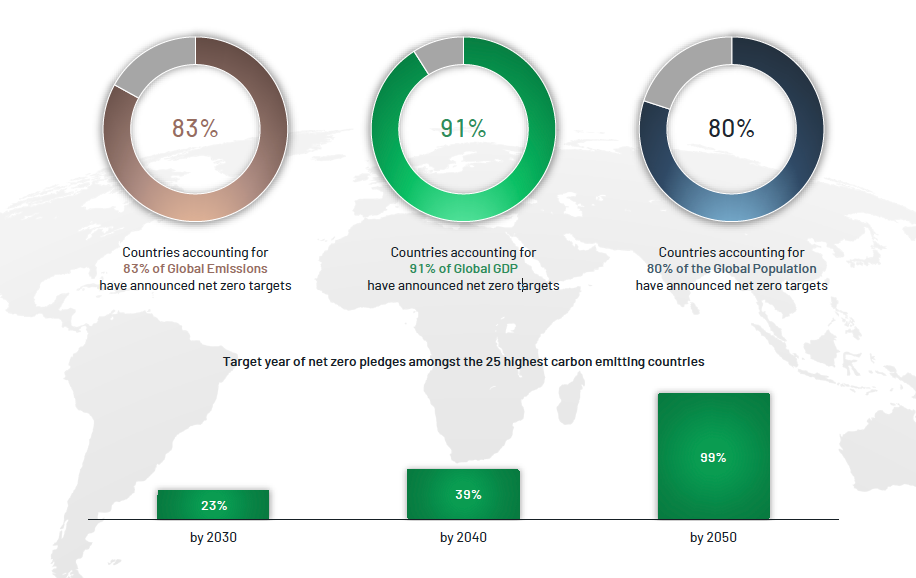Why Carbon Targets are Unrealistic
“Commitment is what transforms a promise into reality.” – Abraham Lincoln
Which countries have committed to carbon emissions standards, and how do they hope to achieve them? How could carbon commitments affect the markets? Is the time ripe to focus on commodities that are central to global green initiatives by investing in a lithium, nickel, cobalt, and copper ETF?
Race to net-zero emissions dwarfs the cost of all other mega projects (in today’s dollars)

There are massive commitments to net zero; over $4 trillion between the United States, European Union, and China to be spent within the next decade. To understand the sheer scale of the effort, the visual below illustrates where we are in terms of committed fiscal expenditures on green initiatives in comparison to past human endeavors.
We believe these commitments crush any comparison between today’s “green bubble” (and the bubble it could become), and bubbles of the past; the world’s governments weren’t committing trillions of dollars to the Dot Com era technology transition.
The Paris Agreement
The Paris Agreement, signed in 2015, is a global agreement within the United Nations Framework Convention on Climate Change (UNFCCC) aimed at mitigating the impact of global warming and climate change. The agreement seeks to limit global temperature rise to “well below 2 degrees Celsius above pre-industrial levels and to make efforts to limit it to 1.5 degrees Celsius.”[1]
A key element of the agreement is the Enhanced Transparency Framework, in which countries expressed their willingness to regularly report on their carbon emissions, also called greenhouse gas emissions, and to make continual progress towards reducing them. While the Paris Agreement does not impose specific limits on carbon emissions for individual countries, it requires that all countries make nationally-determined contributions (NDCs) towards lowering their emissions and strengthening these contributions over time.
Reducing emissions through EVs
Climate neutrality is the act of bringing down greenhouse gas emissions as close to zero as possible. This shift will take years for most countries to accomplish, due to the change of habits and investment in technology it requires.

Countries throughout the world have begun taking steps toward improving energy efficiency, increasing their use of renewable energy sources, and reducing emissions from industry, building, and transportation. These commitments are a crucial component of a sustainable, low-carbon future.
Promoting the use of electric vehicles, or EVs, is an important step many countries have taken to achieve their carbon emissions goals and eventually reach climate neutrality, as EVs do not emit pollutants. They also save drivers money in fuel costs, require lower maintenance, and have performance benefits over gas-powered vehicles.
Investment Opportunity
Global carbon commitments are not just good for the earth. They also benefit the futures market for the core commodities required to implement carbon-neutral solutions. EVs rely on lithium, nickel, cobalt, and significant amounts of copper wire. Demand for these raw materials is expected to soar as the world aims for net zero emissions.[2]
Global goals
Most of the world’s emissions come from just a few countries.[3] The top seven emitting countries accounted for about half of the world’s greenhouse gas emissions in 2020, and The Group of 20 is responsible for about 75% of greenhouse gas emissions globally.[4] As part of the Paris Agreement, the highest carbon emitting countries have set net zero pledges they aim to achieve in the coming years:
- The European Union has set a target to reduce its greenhouse gas emissions by at least 55% by 2030 compared to 1990 levels and achieve climate neutrality by 2050.[5] To achieve this goal, the EU is promoting the use of EVs and other low-emission modes of transportation. The EU has also made strides to further the use of renewable energy sources such as solar and wind power and is implementing measures to improve energy efficiency in buildings and industry.
- China has also made ambitious carbon commitments as the world’s largest emitter of greenhouse gasses. China has pledged to reach peak carbon emissions by 2030 and achieve carbon neutrality by 2060. China has been investing heavily in renewable energy sources and has implemented measures to improve energy efficiency and reduce emissions from transportation and industry to make these goals attainable. One of several policy recommendations needed for China to make this shift is “accelerating electrification in private and commercial vehicles and providing adequate charging infrastructure.”[6]
- The US is the world’s second-largest emitter of greenhouse gases. President Biden’s National Climate Task Force pledged to reduce greenhouse gas emissions by 50-52% below 2005 levels in 2030, reach 100% carbon pollution-free electricity by 2035, and achieve net-zero emissions by no later than 2050.[7]
- India is the world’s third-largest emitter of greenhouse gases. India’s carbon commitments include setting a target to reduce its emissions intensity by 45% by 2030 compared to 2005 levels. India is implementing measures to improve energy efficiency in transportation and industry, as well as promoting the use of renewable energy sources. India’s Production Linked Incentive plan will, among other initiatives, increase the manufacture of low-emissions products like EVs, super-efficient appliances, and innovative technologies like green hydrogen.[8]
- Many other countries around the world have also made carbon commitments as part of the Paris Agreement.[9] These commitments are critical in addressing the impact of climate change and are an important step towards a sustainable, low-carbon future.
The drive to change
Countries that have made carbon commitments have introduced legislation incentivizing EVs[10] and limiting the sales of cars that rely on fossil fuels.[11] These pledges to reduce greenhouse gas emissions will likely continue to impact the value of commodities used to make batteries for electric vehicles. Global demand for lithium, cobalt, nickel, and copper has sharply risen and is likely to outpace supply over the coming decades.[12]
Car manufacturers have been rapidly bringing EVs to market. While it is yet unclear which EV manufacturers will come out ahead, one thing is certain: All EVs will rely on the core raw materials used to produce the batteries they run on: lithium, nickel, cobalt, and manganese, as well as the copper wire that connects them. Savvy investors will likely want to consider a lithium, cobalt or copper ETF that prioritizes this key commodity used in EV batteries. EMG’s CHRG ETF combines exposure to the futures market of a range of core commodities essential in any EV battery or other carbon-neutral solutions – Lithium, Nickel, Copper and Cobalt. As countries around the world renew and strengthen their carbon commitments, effective exposure to these commodities becomes an increasingly attractive option for investors
[1] “The Paris Agreement. What is the Paris agreement?” www.unfccc.int
[2] “The raw-materials challenge: How the metals and mining sector will be at the core of enabling the energy transition.” January 10, 2022. www.mckinsey.com
[3] “For a livable climate: Net-zero commitments must be backed by credible action.” www.un.org
[4] “G-20 nations have gathered to talk carbon emissions. The negotiations won’t be easy.” August 31st, 2022. www.cnbc.com
[5] “2030 Climate Target Plan.” www.climate.ec.europa.eu
[6] “China’s Transition to a Low-Carbon Economy and Climate Resilience Needs Shifts in Resources and Technologies.” October 12th, 2022. www.worldbank.org
[7] “Take Climate Action in Your Community” www.whitehouse.gov
[8] “Cabinet approves India’s Updated Nationally Determined Contribution to be communicated to the United Nations Framework Convention on Climate Change.” August 3rd, 2022. www.pib.gov.in
[9] www.zerotracker.net
[10] “Credits for New Clean Vehicles Purchased in 2023 or After.” January 25th, 2023. www.irs.gov
[11] “EU approves effective ban on new fossil fuel cars from 2035.” October 28th, 2022. www.reuters.com
[12] “The demand for electric vehicles is skyrocketing. Can the supply of lithium and other critical minerals for batteries keep up?” October 4th, 2022. www.grid.news
Investing in ETF’s involves risk, including possible loss of principal. International investing may be subject to special risks, including currency exchange rate volatility, political, social or economic instability, less publicly available information, less stringent investor protections, and differences in taxation, auditing and other financial practices. Investment in emerging market securities involves greater risk than that associated with investment in foreign securities of developed foreign countries. The Fund invests in securities of companies of all sizes, including those that have relatively small market capitalizations. Investments in securities of these companies involve greater risks than do investments in larger, more established companies. Derivatives include instruments and contracts that are based on, and are valued in relation to, one or more underlying securities, financial benchmarks or indices, such as futures, options, swap agreements and forward contracts. The Adviser may engage in speculative transactions which involve substantial risk and leverage, such as making short sales. The use of leverage by the Adviser may increase the volatility of the Fund. Because the Fund invests in financial instruments that are linked to different types of commodities from the metals sector, the Fund is subject to the risks inherent in the metals sector. Such risks may include, but are not limited to: general economic conditions or cyclical market patterns that could negatively affect supply and demand in a particular industry; changes in environmental conditions, energy conservation and environmental policies; competition for or depletion of resources; adverse labor relations; political or world events; increased regulatory burdens; changes in exchange rates; imposition of import controls; obsolescence of technologies; and increased competition or new product introductions. The exploration and development of mineral deposits involve significant financial risks over a significant period of time, which even a combination of careful evaluation, experience and knowledge may not eliminate. Few properties which are explored are ultimately developed into producing mines. The Fund invests in companies that are economically tied to the lithium industry, which may be susceptible to fluctuations in the underlying commodities market. Commodity prices may be influenced or characterized by unpredictable factors, including, where applicable, high volatility, changes in supply and demand relationships, weather, agriculture, trade, changes in interest rates and monetary and other governmental policies, action and inaction. Securities of companies held by the Fund that are dependent on a single commodity, or are concentrated on a single commodity sector, may typically exhibit even higher volatility attributable to commodity prices.
Shares are bought and sold at market price (not NAV) and are not individually redeemed from the Fund. The returns shown do not represent the returns you would receive if you traded shares at other times. Brokerage commissions will reduce returns. The market price returns are based on the official closing price of an ETF share or, if the official closing price isn’t available, the midpoint between the national best bid and national best offer (“NBBO”) as of the time the ETF calculates current NAV per share. NAVs are calculated using prices as of 4:00 PM Eastern Time.
The Energy & Minerals Group EV, Solar & Battery Materials (Lithium, Nickel, Copper, Cobalt) Futures Strategy ETF is distributed by Quasar Distributors, LLC.
Investors should carefully consider the investment objectives, risks, charges and expenses of the The Energy & Minerals Group EV, Solar & Battery Materials (Lithium, Nickel, Copper, Cobalt) Futures Strategy ETF. This and other important information about the Fund is contained in the Prospectus, which can be obtained by calling 1-800-617-0004 or visiting www.emgadvisors.com. The Prospectus should be read carefully before investing.



